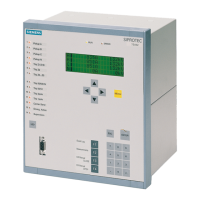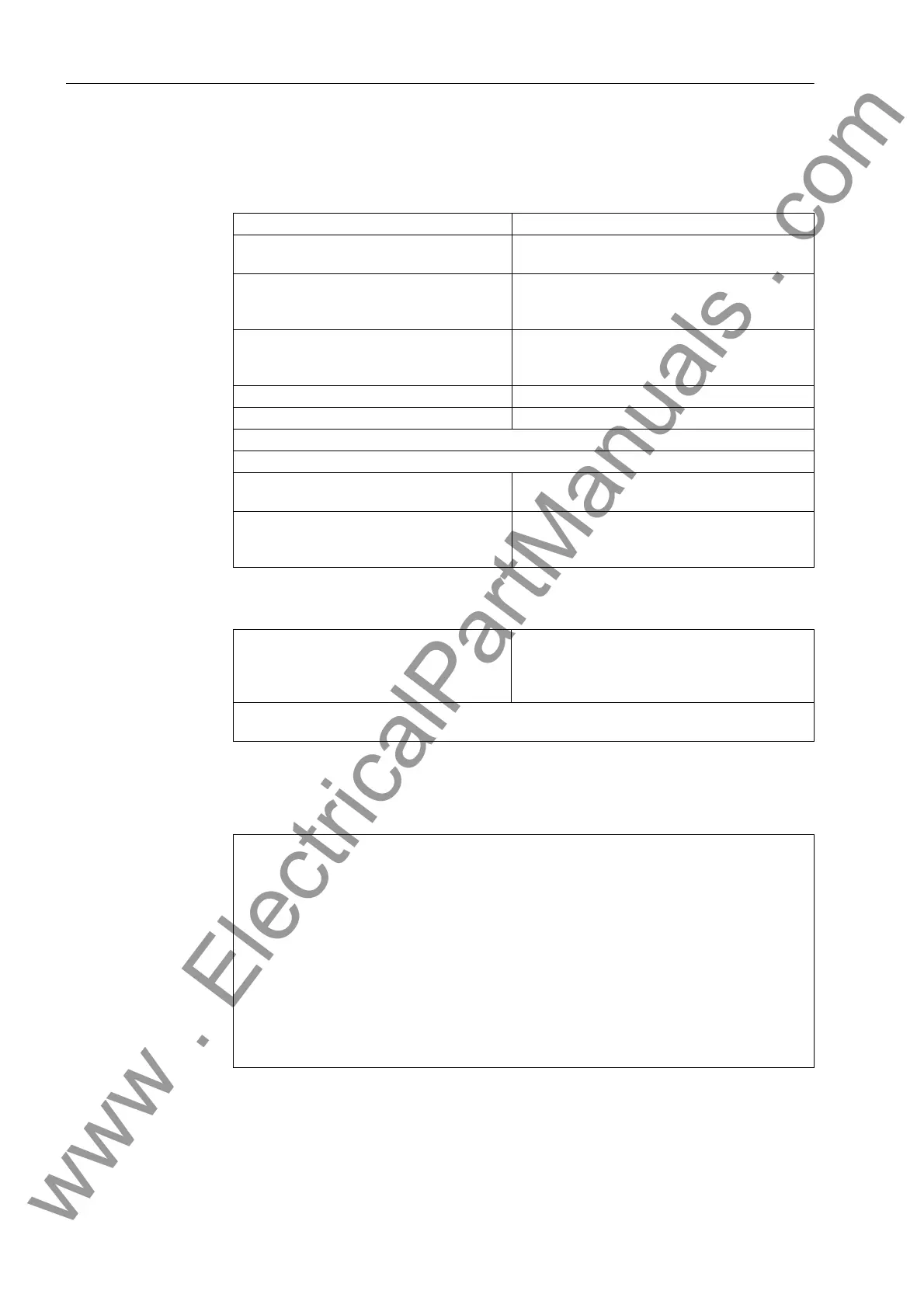4 Technical Data
304
7UM61 Manual
C53000-G1176-C127-3
4.1.7 Climatic Stress Tests
Temperatures
1
)
Humidity
4.1.8 Deployment Conditions
Standards: IEC 60255-6
Type tested (acc. IEC 60086-2-1 and -2, Test
Bd, for 16 h)
–25 °C to +85 °C / –13 °F to +185 °F
admissible temporary operating temperature
(tested for 96 h)
– 4.00 °F to +158.00 °F / –20 °C to +70 °C (legi-
bility of display may be restricted from +131.00
°F / +55 °C)
recommended for permanent operation (ac-
cording to
IEC 60255–6)
-5 °C to +55 °C / +23 °F to +131 °F
Limit temperatures for storage –25 °C to +55 °C / –13 °F to +131 °F
Limit temperatures during transport –25 °C to +70 °C / –13 °F to +158 °F
Storage and transport of the device with factory packaging!
1
) UL–certified according to Standard 508 (Industrial Control Equipment):
Limit temperatures for normal operation (i.e.
output relays not energized)
-20 °C to +70 °C / –4 °F to +158 °F
Limit temperatures under maximum load
(max. cont. admissible input and output
values)
-5 °C to +55 °C / +23 °F to +131 °F
admissible humidity annual average ≤ 75 % relative humidity;
on 56 days of the year up to 93% relative humid-
ity. CONDENSATION MUST BE AVOIDED IN
OPERATION
Siemens recommends that all devices be installed so that they are not exposed to direct sun-
light nor subject to large fluctuations in temperature that may cause condensation to occur.
The protection device is designed for installation in normal relay rooms and plants, so that elec-
tromagnetic compatibility (EMC) is ensured if installation is done properly.
In addition the following is recommended:
• Contacts and relays operating within the same cabinet or on the same relay board with
digital protection equipment, should be in principle provided with suitable fuses.
• For substations with operating voltages of 100 kV and above, all external cables should be
shielded with a conductive shield grounded at both ends. Normally in medium voltage
systems no special procedures are necessary.
• Do not withdraw or insert individual modules/boards while the protective device is ener-
gized. In withdrawn condition, some components are electrostatically endangered; during
handling the ESD standards (for Electrostatic Sensitive Devices) must be observed. They
are not endangered when inserted into the case.
www . ElectricalPartManuals . com

